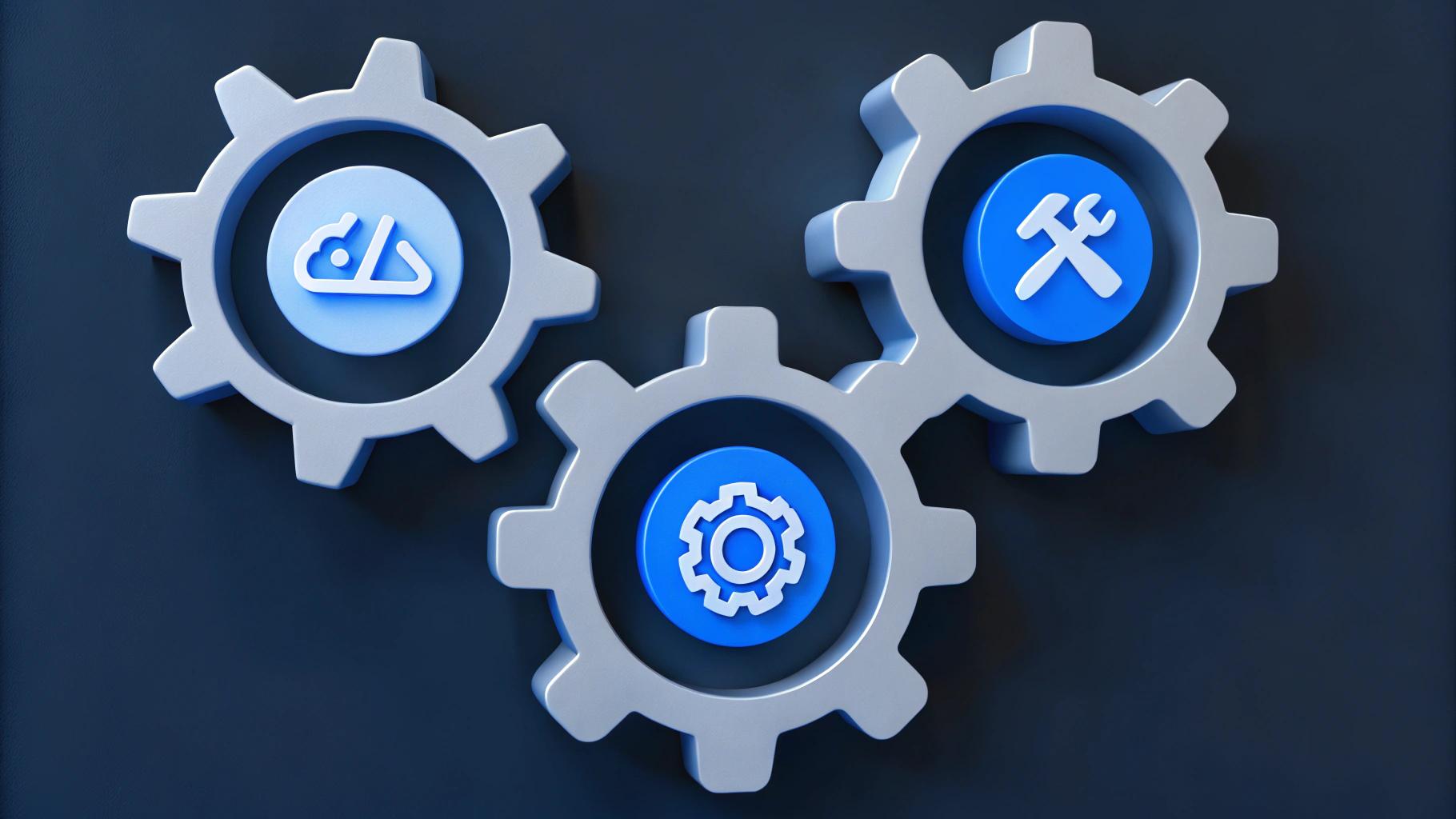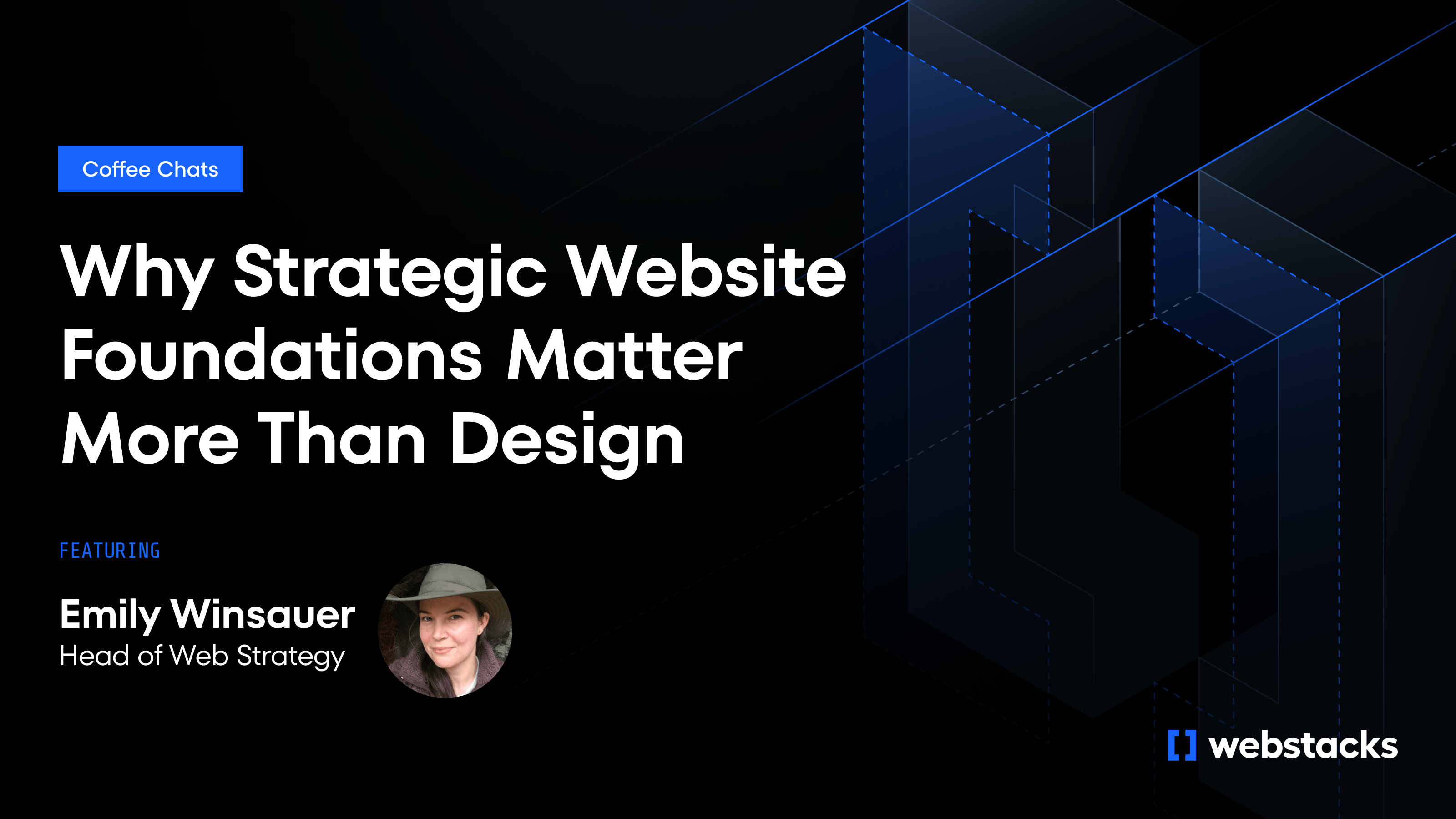Jamstack is a modern approach to building websites that separates the frontend from the backend. It stands for JavaScript, APIs, and Markup. And it delivers static pages through a CDN for faster performance, stronger security, and easier scaling.
But while the architecture provides the foundation, your content management system (CMS) shapes the day-to-day experience. The best Jamstack CMS platforms support fast-growing teams by making content creation simpler and publishing faster, without limiting developer flexibility.

How to Choose the Right Jamstack CMS for Your Business
When evaluating Jamstack CMS platforms for your business, several criteria should guide your decision:
Integration Capabilities
The CMS you choose should connect easily with modern website tools like Next.js, Gatsby, and Nuxt. The goal is to let your developers keep using the tools they know. The smoother the integration, the faster your team can build and publish.
Scalability
Jamstack uses a network of servers (CDN), providing better scalability than traditional CMS platforms. However, setup matters. Choose a CMS that can keep up as your website grows and handle sudden traffic spikes without slowing down.
Editor Experience
An easy-to-use interface is important so that even non-technical team members can manage content without trouble. CMS platforms offer different editing options, from basic forms to advanced visual tools. Check how well each platform balances ease of use while giving your team the flexibility to create high-quality content.
API Flexibility
The flexibility of a CMS API can affect the speed of the development team and content delivery. Choose platforms that support both GraphQL and REST APIs, so your team can pick the best method for each task. Also, make sure it’s easy to create and customize content models to match your business needs.
Security and Deployment
Jamstack architecture is more secure because it uses static files and has fewer weak spots. When choosing a CMS, see how well it helps maintain that security and how easily it fits into your publishing process. Look for features like automatic deployments, quick rollbacks, and compatibility with your CDN.
When you consider these points, you’ll be able to choose a CMS that works well for you now and can grow with your business and digital strategy.
10 Best Jamstack CMS Platforms
This list of the best Jamstack CMS platforms covers options for different needs, from large enterprises to smaller startups. Each platform is evaluated based on integration, scalability, ease of use, API flexibility, and security.
1. Contentful
Contentful is a top choice for large businesses that need a flexible and powerful CMS. It’s great for companies managing a lot of content, especially across different languages and teams.
Key strengths:
- Works with both REST and GraphQL APIs
- Offers many integrations through its App Marketplace
- Has strong support for Next.js with dedicated SDKs
- Uses a global CDN for fast content delivery
- Makes content easier to reuse and display efficiently
Contentful's global CDN with edge caching ensures exceptional performance for large-scale enterprise deployments. iTrustCapital, with help from Webstacks, migrated from WordPress to Contentful and Gatsby to improve content editing and boost site performance.
Keep in mind: Contentful can get expensive as your needs grow, so it’s better suited for larger teams. But if you need a flexible and enterprise-ready CMS, it’s one of the best options out there.
2. Sanity
Sanity is a developer-focused CMS that gives teams a lot of freedom to build custom content workflows. It’s popular with media companies and fast-moving teams that need real-time editing and collaboration.
Key strengths:
- Uses both GROQ and GraphQL for flexible data queries
- Customizable editing environment with Sanity Studio
- Real-time collaboration for content teams
- Supports structured content
- Lets you create custom editors using Portable Text
- Real-time content updates for dynamic websites
Webstacks helped Knapsack move from Webflow to Sanity to support their fast-growing design system platform. The switch gave Knapsack’s team more flexibility and made it easier to manage content without relying on developers
Keep in mind: Sanity takes more time to set up and learn, especially for developers. But once it’s in place, it gives you full control to shape the CMS exactly the way you want.
3. Storyblok
Storyblok is a highly visual CMS that’s perfect for brands with a lot of content and for agencies working with non-technical clients. Its visual editor lets you preview changes in real time, which helps both marketers and developers stay on the same page.
Key strengths:
- Lets you build with reusable components
- Drag-and-drop layout with visual nesting
- Strong support for multi-language content
- Plugin system to extend functionality
- Feels like a website builder but with the flexibility of a headless CMS
In early 2025, Storyblok launched Storyblok Labs to test new features and expand what’s possible with visual content editing. They’ve also improved their tools for enterprise users.
Keep in mind: The editor interface might feel a bit overwhelming at first. But once it’s set up, it allows marketing teams to create and manage pages on their own—no developer help needed.
4. Strapi
Strapi is an open-source CMS built for developers who want control over every part of their setup. It’s a great fit for startups and teams building custom content APIs.
Key strengths:
- Can be self-hosted for full control and performance
- Plugin system for adding new features
- Customizable admin panel
- Built with Node.js
- REST and GraphQL API support included
- Works with many databases like PostgreSQL and MySQL
Finary is a fintech startup that used Strapi to build SEO-optimized landing pages. This helped them grow their organic traffic 100x, reaching over 70,000 unique monthly sessions, 75% of which came from search.
Keep in mind: Strapi needs more developer effort to maintain compared to plug-and-play platforms. The dashboard is editor-friendly but not as polished as some paid options. Still, it’s a strong choice if you want full flexibility.
5. Prismic
Prismic is a smart pick for marketing teams that need to launch pages quickly. It’s especially popular with SaaS companies and teams running frequent campaigns or landing pages. It’s easy for marketers to use, but still offers flexibility for developers.
Key strengths:
- “Slices” make it easy to build modular content blocks
- Works well with popular frontend frameworks
- Clean and simple editor interface
- Built-in preview and scheduling tools
- Supports both GraphQL and REST APIs
- Webhooks help trigger automated builds
Prismic is great for teams that want to move fast without sacrificing quality. It’s easy to use and doesn’t require much setup, making it a good fit for content-heavy teams.
Keep in mind: It’s not as customizable on the backend as tools like Sanity, but many marketing teams find that the simplicity helps them work more efficiently.
6. Agility CMS
Agility CMS offers a mix of traditional CMS features and modern headless capabilities. It’s a solid choice for brands moving away from WordPress or other legacy systems but who still want familiar tools and workflows.
Key strengths:
- Built-in tools for managing full pages
- .NET support for enterprise environments
- Balanced features for both developers and content editors
- Custom content modeling options
- Workflow features to manage team collaboration
- Delivers content across multiple channels
Agility CMS is especially useful for teams in transition. It combines structured content delivery with a familiar editing experience.
Keep in mind: The interface feels more like a traditional CMS, which can be helpful for teams used to older systems, but it may not feel as modern as some other headless platforms.
7. Netlify CMS
Netlify CMS is a lightweight option that works best for developers already using Netlify for hosting. It’s a great fit for static websites like blogs or documentation pages.
Key strengths:
- Git-based workflow keeps content alongside your code
- Free and open source
- Deep integration with Netlify’s deployment tools
- Stores content in Markdown files
- Built-in version control
- No separate database needed
When you update content, the site automatically rebuilds, making deployment smooth and efficient.
Keep in mind: The interface is basic and lacks advanced editorial tools. But if your team is comfortable with Git, it’s a simple and effective solution for managing content.
8. Ghost
Ghost is designed for publishers, bloggers, and membership-based websites. It focuses on delivering content fast and supporting built-in tools for subscriptions and newsletters.
Key strengths:
- Built-in email marketing and subscription tools
- Clean and focused writing interface
- Optimized for speed and performance
- Distraction-free writing environment
- SEO tools included
- API-first structure for easy Jamstack integration
Ghost offers a streamlined experience for content creators. It’s not as flexible as other CMS platforms for custom apps, but for publishing-focused sites, it’s one of the best options available.
Keep in mind: It’s best suited for content-heavy use cases. If your team needs something beyond publishing, a more flexible CMS might be a better fit.

9. Directus
Directus is a developer-focused CMS built for teams that need to manage structured or relational data. It connects directly to your existing SQL databases and gives you full control over how data is organized and accessed.
Key strengths:
- Works with existing SQL databases
- Fine-grained user roles and permissions
- API-first setup for full flexibility
- No need to migrate data to a new system
- Clean and usable interface for managing structured content
Directus is a strong choice for internal tools and apps that rely on structured data. It’s more technical than most CMS platforms, so it’s not ideal for marketing teams, but it’s great for developers.
Keep in mind: It’s built with technical users in mind, so setup and day-to-day use will be smoother for teams with developer experience.
10. ButterCMS
ButterCMS is a simple, hosted CMS designed for fast-moving teams. It’s useful for small businesses and teams launching marketing websites or MVPs quickly.
Key strengths:
- Fully hosted (SaaS) platform
- Clean and easy-to-use interface
- Built-in blogging tools
- Quick setup with SDKs for popular frameworks
- Simple content modeling for fast builds
ButterCMS is easy to get started with and doesn’t require much technical effort. Marketers can jump in and start publishing content right away.
Keep in mind: It’s not built for complex customizations or large-scale applications. But for smaller projects that need to launch quickly, it’s a reliable and efficient option.
How to Match a CMS to Your Use Case
Finding the right CMS depends on more than just features. Your team size, skillset, and the type of website or app you're building all play a role. Here’s how to align your CMS selection with your real-world needs.
1. Based on Company Size
Startups and Small Businesses
If you're working with a lean team or limited budget, simplicity and speed matter most.
- Recommended: Strapi, Netlify CMS, ButterCMS
- Why it works: These platforms are lightweight, low-cost, and easy to set up—perfect for getting started fast.
A small startup can use Strapi to build a flexible product catalog API without expensive tools or overhead.
Mid-Market Companies
Growing teams need more structure without sacrificing usability.
- Recommended: Storyblok, Prismic, Agility CMS
- Why it works: These CMSs strike a balance between power and ease of use, supporting collaboration across developers and marketers.
A mid-sized business might choose Storyblok for its visual editor and component-based content system.
Enterprises
At scale, you need governance, performance, and advanced workflows.
- Recommended: Contentful, Sanity
- Why it works: These platforms offer enterprise-grade tools for managing complex, global content across teams and regions.
A global brand can use Contentful’s localization and modeling tools to run multi-language websites efficiently.
2. Based on Team Composition
Developer-Heavy Teams
When developers lead content architecture, flexibility is key.
- Recommended: Sanity, Strapi, Directus
- Why it works: These CMSs provide full control, custom workflows, and strong API support.
A technical team might pick Sanity for its powerful Studio interface and real-time collaboration tools.
Marketing-Heavy Teams
For teams focused on content creation, simplicity and visual editing matter most.
- Recommended: Storyblok, Prismic, ButterCMS
- Why it works: These platforms offer intuitive interfaces that help marketers launch campaigns without waiting on developers.
A content team could use Prismic’s Slices to build and reuse landing page sections quickly.
Balanced Teams
If developers and marketers both need to work in the CMS, choose something that supports both.
- Recommended: Contentful, Agility CMS
- Why it works: These tools support strong APIs for developers and user-friendly dashboards for editors.
A cross-functional team might opt for Contentful to maintain structured content while empowering non-technical users.
3. Based on Digital Property Type
Blogs and Content Sites
Content-first sites need great publishing workflows and writing tools.
- Recommended: Ghost, Netlify CMS, ButterCMS
- Why it works: These platforms are built for writing, editing, and distributing content quickly.
A media company could use Ghost to run a newsletter and paywalled blog in one streamlined platform.
Web Applications
Apps need flexible data structures and reliable APIs.
- Recommended: Directus, Strapi, Sanity
- Why it works: These CMSs give developers the power to define custom schemas and connect easily to frontend frameworks.
A SaaS product might use Strapi to power a custom admin interface and serve content across devices.
Corporate and Marketing Sites
You’ll need design flexibility and the ability to manage content across teams.
- Recommended: Contentful, Storyblok, Prismic
- Why it works: These platforms support structured content, localization, and multi-channel publishing.
A marketing team might use Storyblok to manage multiple microsites with reusable components and visual previews.
E-commerce
Selling online demands speed, structure, and integration with product systems.
- Recommended: Contentful, Sanity, Storyblok (with commerce integrations)
- Why it works: These CMSs can handle product data and connect to headless commerce tools.
An online retailer could use Sanity to model product pages and integrate with Shopify or a custom storefront.
Pick the Right Jamstack CMS for Your Team
Choosing a Jamstack CMS is about finding the right fit for your team’s needs today, and where you’re headed tomorrow. Some platforms are better for speed and simplicity, others for customization and scale. What matters most is how well the CMS supports your workflows and growth.
Webstacks has worked with companies like iTrustCapital and Knapsack to implement many of the platforms featured here. With the right setup, your CMS can become a powerful part of your digital strategy—helping your team move faster, publish more easily, and scale with confidence.
Need help choosing the right CMS or building a composable stack? Talk to Webstacks.




